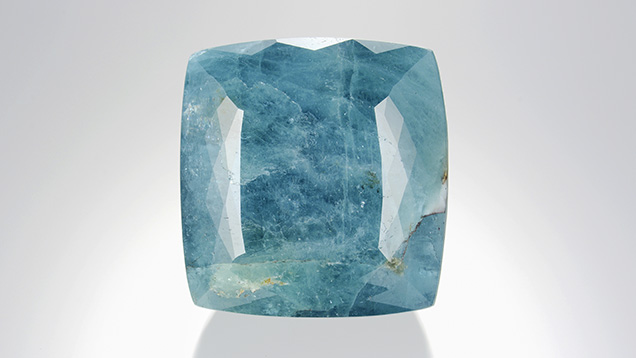Unusually Large Grandidierite

The Carlsbad laboratory received a green-blue translucent to semi-translucent stone weighing approximately 763.5 ct and measuring 50.32 × 48.15 × 36.17 mm (see above). Standard gemological examination revealed a refractive index of 1.621–1.581, weak green-blue to green pleochroism, and absorption lines at 480 and 490 nm seen in the handheld spectroscope. Examination with a standard gemological microscope revealed the stone to be heavily included with fractures, fine particulate clouds, and miscellaneous whitish minerals. The results from Raman spectroscopy, microscopic observations, and standard gemological examination were consistent with the rare mineral grandidierite.
Named after French naturalist Alfred Grandidier (1836–1912), grandidierite is a very rare mineral first discovered in 1902 at the cliffs of Andrahomana on the southern coast of Madagascar (D. Bruyere et al., “A new deposit of gem-quality grandidierite in Madagascar,” Fall 2016 G&G, pp. 266–275). Gem-quality material of facetable size was not found in the market until after the summer of 2015 (Winter 2015 Gem News International, pp. 449–450). Grandidierite is found in various localities as an accessory mineral in aluminous boron-rich pegmatites and in rocks subjected to local high-temperature, low-pressure metamorphism such as contact aureoles and xenoliths (again, see D. Bruyere et al., 2016). It very seldom reaches large sizes, and this is the largest grandidierite GIA has seen to date.



